Sewer well device: requirements and types
The process of planning and building sewer systems is not difficult, however there are special rules and regulations of building regulations that impose certain requirements on the installation and materials. There are also special state services that check the construction of the sewage well according to the SNiP, and in case of violations, they may impose a fine or demand to rebuild the system.
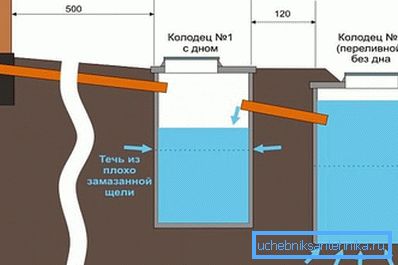
Therefore, before building a sewer well with your own hands, it is necessary to become familiar with their basic types and installation rules.
Types of sewer wells
According to the functional purpose, mines are conventionally divided into several main types:
- viewing;
- differential pressure;
- rotary;
- accumulative;
- filtration.
Each of these types performs its specific function.
Inspection well
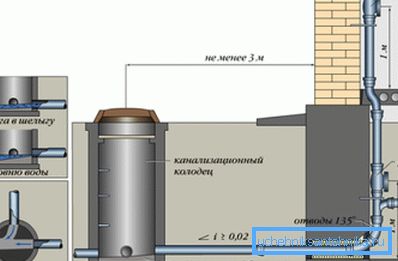
An inspection well (photo) is a mine, which is located above the main diverting main. Such a mine makes it possible to carry out a visual inspection of the system’s performance and, if necessary, flush it or mechanically clean it during operation.
In most cases, such mines are installed on straight sections of drainage over a certain distance, however, mines installed at turns or intersections of communications can be called viewing ones.
Inspection mines can be of several types:
- linear, installed on straight sections;
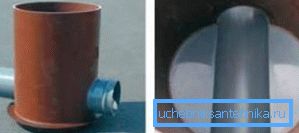
- swivel, installed in places where the direction of the line changes. In order to avoid hydraulic resistance, the angle between the incoming and outgoing highway should be at least 90 degrees;
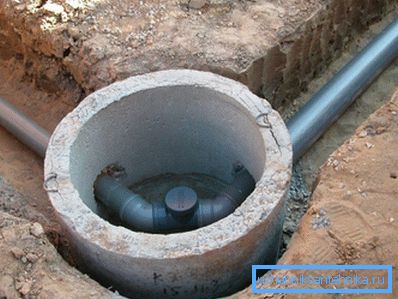
- nodal, installed at the junction of several highways. Such chambers connect one discharge pipe with several incoming pipes, but there can be no more than three incoming pipes;
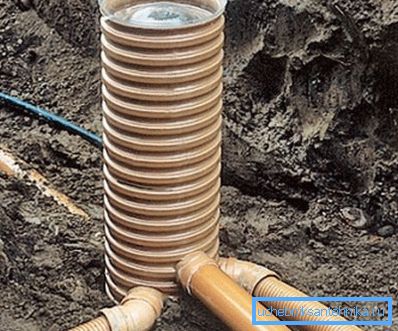
- checklists, set in the places where the private system is connected to the main one.
Note! The distance between the inspection shafts is determined by the diameter of the pipe. For example, with a pipe diameter of 15 cm, the distance between wells is set to no more than 35 meters. With a pipe diameter of 50 - 70 cm, the distance between the mines is 75 meters.
Drop well

The device of the differential sewer well is a simple construction (see photo), which is installed in such cases:
- while reducing the depth of the ditch under the branch line;
- bypassing other underground pipes or communications;
- to prevent high velocity of the fluid.
By type and function, the drop wells are divided into several types:
- the usual mine with a supply of fluid in the upper part and outlet in the lower;
- drop with break-down wall to reduce the flow rate;
- short channels with a high degree of slope to increase the flow rate;
- mine with multistage differences.
Pivot well
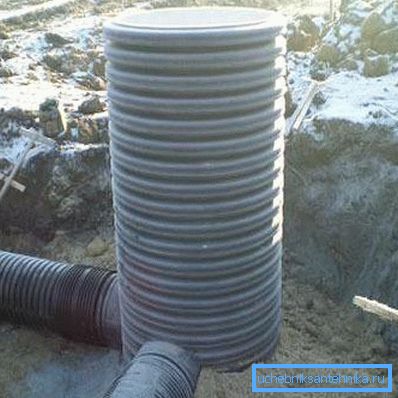
Such mines are installed on those sections of the highway where sharp turns of the channel are necessary, since it is in these places that the system is most often clogged.
Storage well
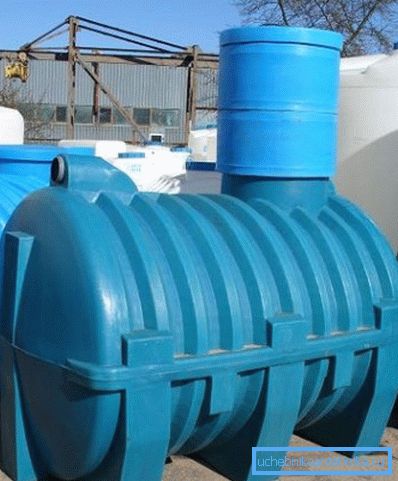
Accumulation shafts or wells (photo) are designed for collecting and storing waste liquid with its subsequent pumping out with the help of a pump or special vacuum trucks.
For private houses, the device of sewage wells of this type can be an advantageous solution if the nearest central system is far away or not at all. Such mines, depending on the volume, can be made of reinforced concrete rings, solid concrete or large plastic containers.
With a small amount of wastewater, the installation of a plastic container is most justified, since the price of such a tank is low and the installation process can be done by hand, without involving equipment or professional construction crews.
Filtration well

Filtration shafts or wells can be open or closed. Both types of wells are designed for the separation of wastewater and the separation of large debris and heavy substances from liquids.
Open-type structures are shafts of perforated concrete blocks, where the liquid escapes through special openings into the ground, while heavy substances remain within the mine and are subsequently discharged with special equipment for burial or disposal.
Closed wells are sealed containers with process taps, which are located at different heights. As wastewater flows, floating particles are discharged by the upper channels, sedimentary layers are discharged by the lower ones.
Materials used
Recently, plastic pipes of various diameters are mainly used to equip sewage systems of a private house. Wells are made of plastic or reinforced concrete, depending on the volume of liquid.
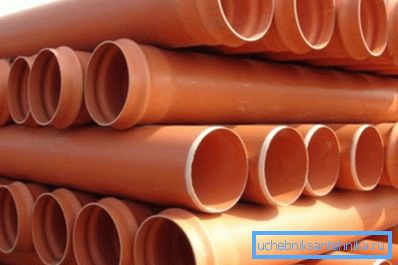
The device of sewage wells made of plastic has its advantages, the main of which is ease of installation, durability and reliability.
From the technical characteristics can be identified such indicators as:
- increased strength and resistance to critical loads;
- wear resistance of the material;
- the smoothness of the inner working surface, which prevents the formation of growths;
- tightness of connections.
However, the wells of this material are designed for small volumes of wastewater and are not suitable for soft soil types, where seasonal deformation or movement of the soil layers is possible.

Concrete wells are used everywhere, despite the complexity of installation.
Mines are built from reinforced concrete rings and have several advantages:
- suitable for any type of soil;
- quickly mounted;
- has high strength and reliability;
- not exposed to chemicals.
However, for the arrangement of such mines (wells) it is necessary to attract construction crews with lifting equipment.
Basic requirements of SNiP
The requirements of the SNiP on the device of sewer manholes are a kind of instruction, where rules are laid out for laying sewage lines and technical requirements for different types of wells, taking into account sanitary and technical safety.
The main requirements for wells are the following rules:
- mines should not be installed near drinking water sources and plumbing systems;
- wells are located at a certain distance from residential buildings and adjacent areas;
- the volume of wells must correspond to the number of people living and the average volume of wastewater over a certain period of time.
Conclusion
Equipping a country house, all construction work is aimed at ensuring comfort and convenience. Many believe that the availability of electricity and a source of fresh water are considered indicators of comfort. However, without an equipped sewage system, it’s very difficult to call a house comfortable and convenient, because without it you cannot properly wash the dishes or take a shower.
Before starting the design of sewage systems, it is recommended that you familiarize yourself with all the provisions of the SNiP and only then proceed to planning, layout and construction. You can also watch the video in this article. Compliance with the norms of SNiP allows you to prevent environmental pollution by untreated sewage and to maintain all the sanitary standards provided for by the rules.